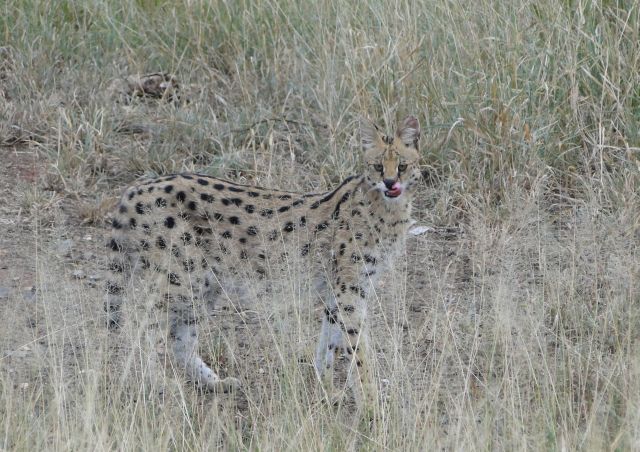Serval
Posted: Sat Apr 01, 2017 4:18 pm
Saw this one near Granokop (Skukuza area) some years ago!
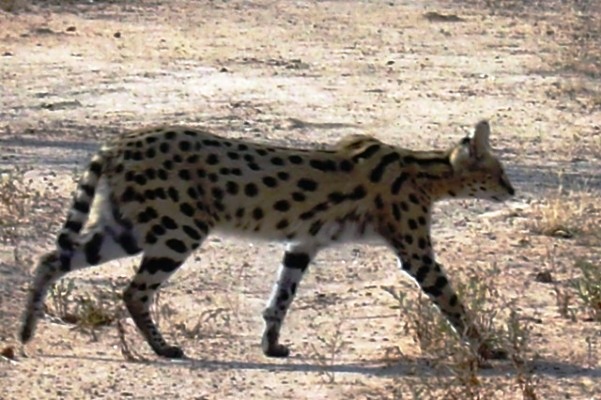
Characteristics
The serval is a slender, medium-sized cat; it stands 54 to 62 cm (21–24 in) at the shoulder and weighs 8 to 18 kg (18–40 lb), but females tend to be lighter. The head-and-body length is typically between 67 and 100 cm (26–39 in). Males tend to be sturdier than females. Prominent characteristics include the small head, large ears, spotted and striped coat, long legs and a black-tipped tail that is around 30 cm (12 in) long. The serval has the longest legs of any cat relative to its body size, largely due to the greatly elongated metatarsal bones in the feet. The toes are elongated as well, and unusually mobile.
Distribution and habitat
In North Africa, the serval is known only from Morocco and has been reintroduced in Tunisia, but is feared to be extinct in Algeria. It inhabits semi-arid areas and cork oak forests close to the Mediterranean Sea, but avoids rainforests and arid areas. It occurs in the Sahel, and is widespread in Southern Africa. It prefers areas with cover, such as reeds and tall grasses, proximity to water bodies such as wetlands and savannahs. It inhabits grasslands, moorlands and bamboo thickets at high altitudes up to 3,800 m (12,500 ft) on Mount Kilimanjaro.[1][8] In 2014 and 2015, it was recorded in the floodplains and gallery forests of Benin’s Pendjari National Park by camera-traps.[23] In the East Sudanian Savanna, it was recorded in the transboundary Dinder–Alatash protected area complex during surveys between 2015 and 2018.
In Zambia's Luambe National Park, the population density was recorded as 0.1/km2 (0.26/sq mi) in 2011. In South Africa, the serval was recorded in Free State, eastern Northern Cape, and southern North West. In Namibia, it is present in Khaudum and the Mudumu National Parks.
Hunting and diet
The serval is a carnivore that preys on rodents, particularly vlei rats, small birds, frogs, insects and reptiles, and also feeds on grass that can facilitate digestion or act as an emetic. Up to 90% of the preyed animals weigh less than 200 grams (7 oz); occasionally it also hunts larger prey such as duikers, hares, flamingoes and young antelopes. The percentage of rodents in the diet has been estimated at 80-97%. Apart from vlei rats, other rodents recorded frequently in the diet include the African grass rat, African pygmy mouse and multimammate mice.

Characteristics
The serval is a slender, medium-sized cat; it stands 54 to 62 cm (21–24 in) at the shoulder and weighs 8 to 18 kg (18–40 lb), but females tend to be lighter. The head-and-body length is typically between 67 and 100 cm (26–39 in). Males tend to be sturdier than females. Prominent characteristics include the small head, large ears, spotted and striped coat, long legs and a black-tipped tail that is around 30 cm (12 in) long. The serval has the longest legs of any cat relative to its body size, largely due to the greatly elongated metatarsal bones in the feet. The toes are elongated as well, and unusually mobile.
Distribution and habitat
In North Africa, the serval is known only from Morocco and has been reintroduced in Tunisia, but is feared to be extinct in Algeria. It inhabits semi-arid areas and cork oak forests close to the Mediterranean Sea, but avoids rainforests and arid areas. It occurs in the Sahel, and is widespread in Southern Africa. It prefers areas with cover, such as reeds and tall grasses, proximity to water bodies such as wetlands and savannahs. It inhabits grasslands, moorlands and bamboo thickets at high altitudes up to 3,800 m (12,500 ft) on Mount Kilimanjaro.[1][8] In 2014 and 2015, it was recorded in the floodplains and gallery forests of Benin’s Pendjari National Park by camera-traps.[23] In the East Sudanian Savanna, it was recorded in the transboundary Dinder–Alatash protected area complex during surveys between 2015 and 2018.
In Zambia's Luambe National Park, the population density was recorded as 0.1/km2 (0.26/sq mi) in 2011. In South Africa, the serval was recorded in Free State, eastern Northern Cape, and southern North West. In Namibia, it is present in Khaudum and the Mudumu National Parks.
Hunting and diet
The serval is a carnivore that preys on rodents, particularly vlei rats, small birds, frogs, insects and reptiles, and also feeds on grass that can facilitate digestion or act as an emetic. Up to 90% of the preyed animals weigh less than 200 grams (7 oz); occasionally it also hunts larger prey such as duikers, hares, flamingoes and young antelopes. The percentage of rodents in the diet has been estimated at 80-97%. Apart from vlei rats, other rodents recorded frequently in the diet include the African grass rat, African pygmy mouse and multimammate mice.
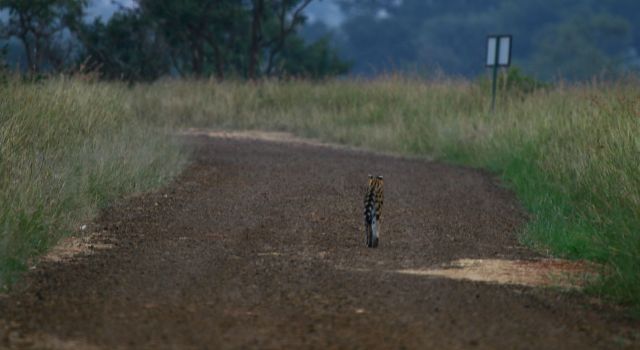
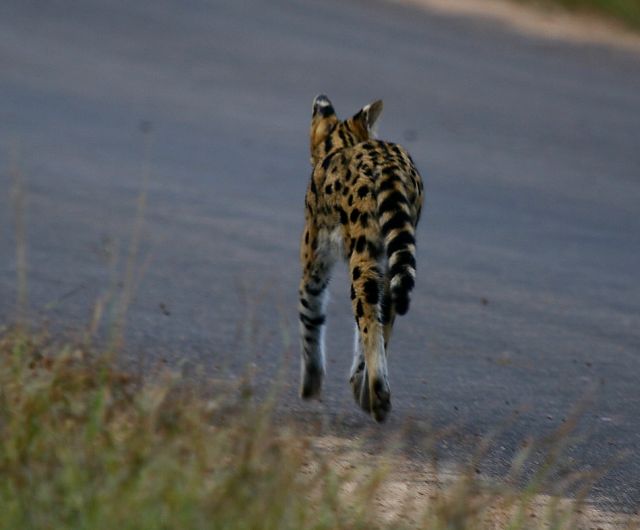
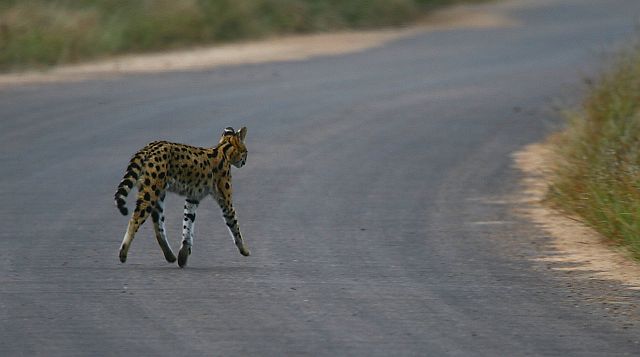
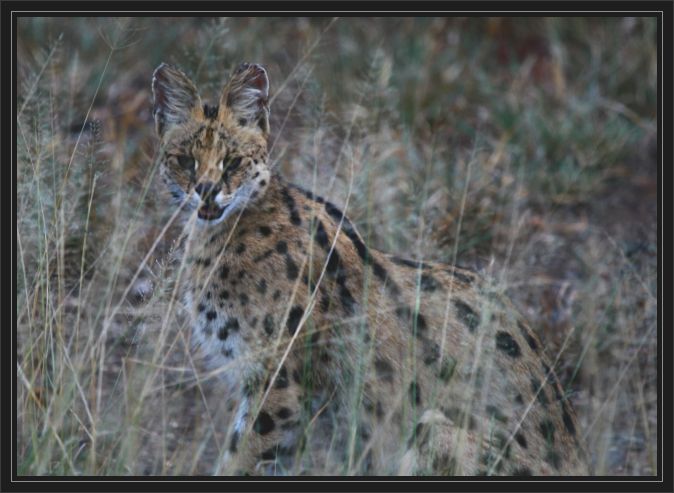
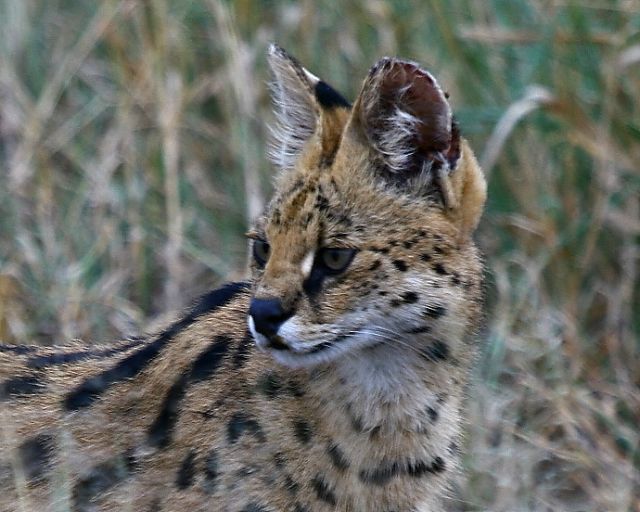
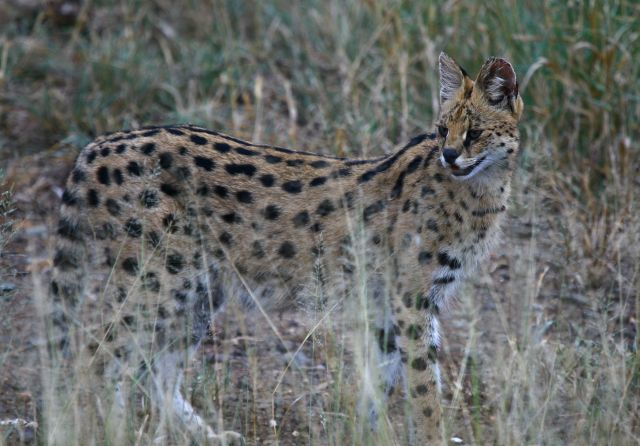 [
[